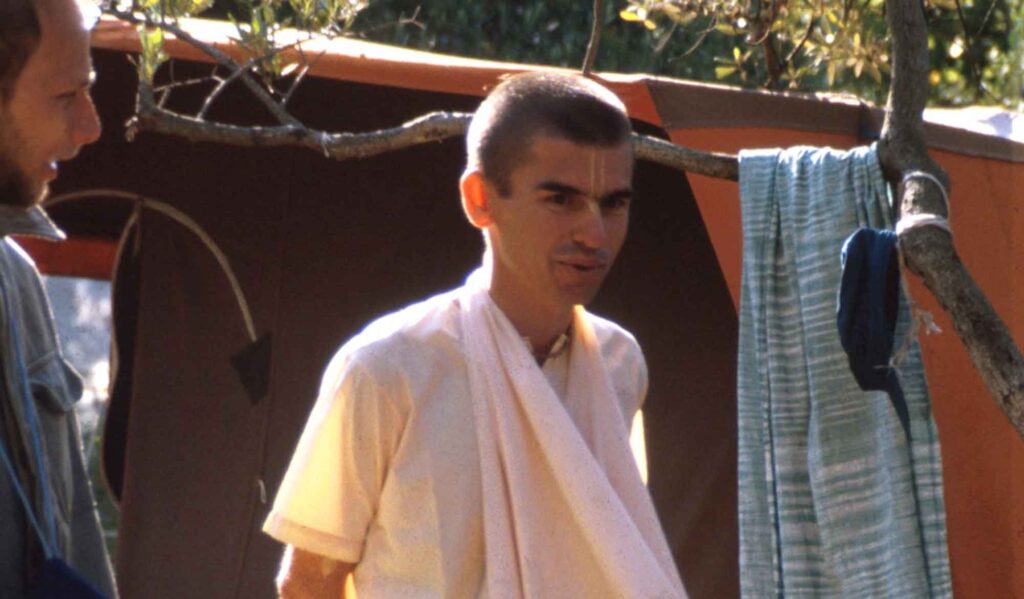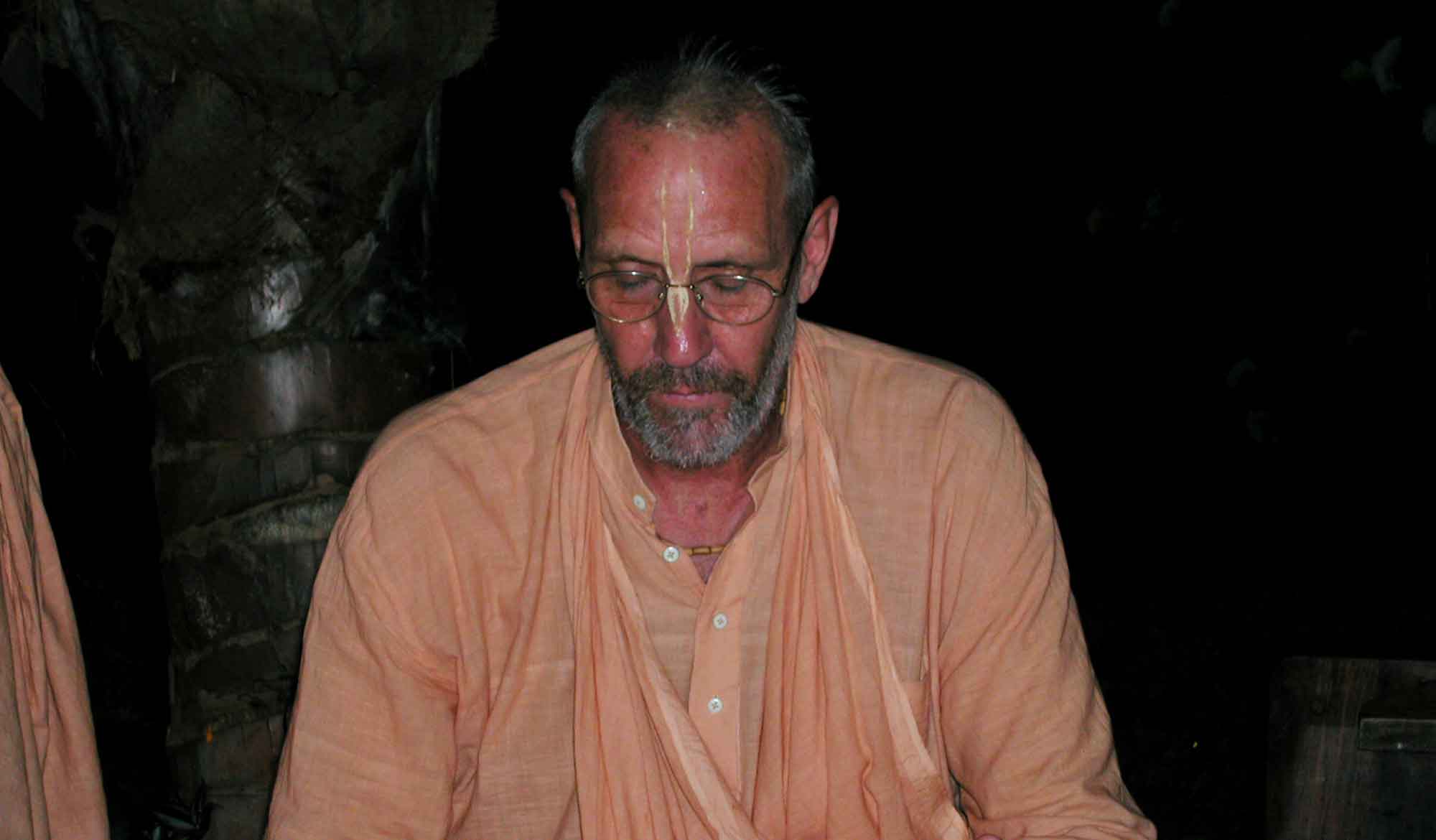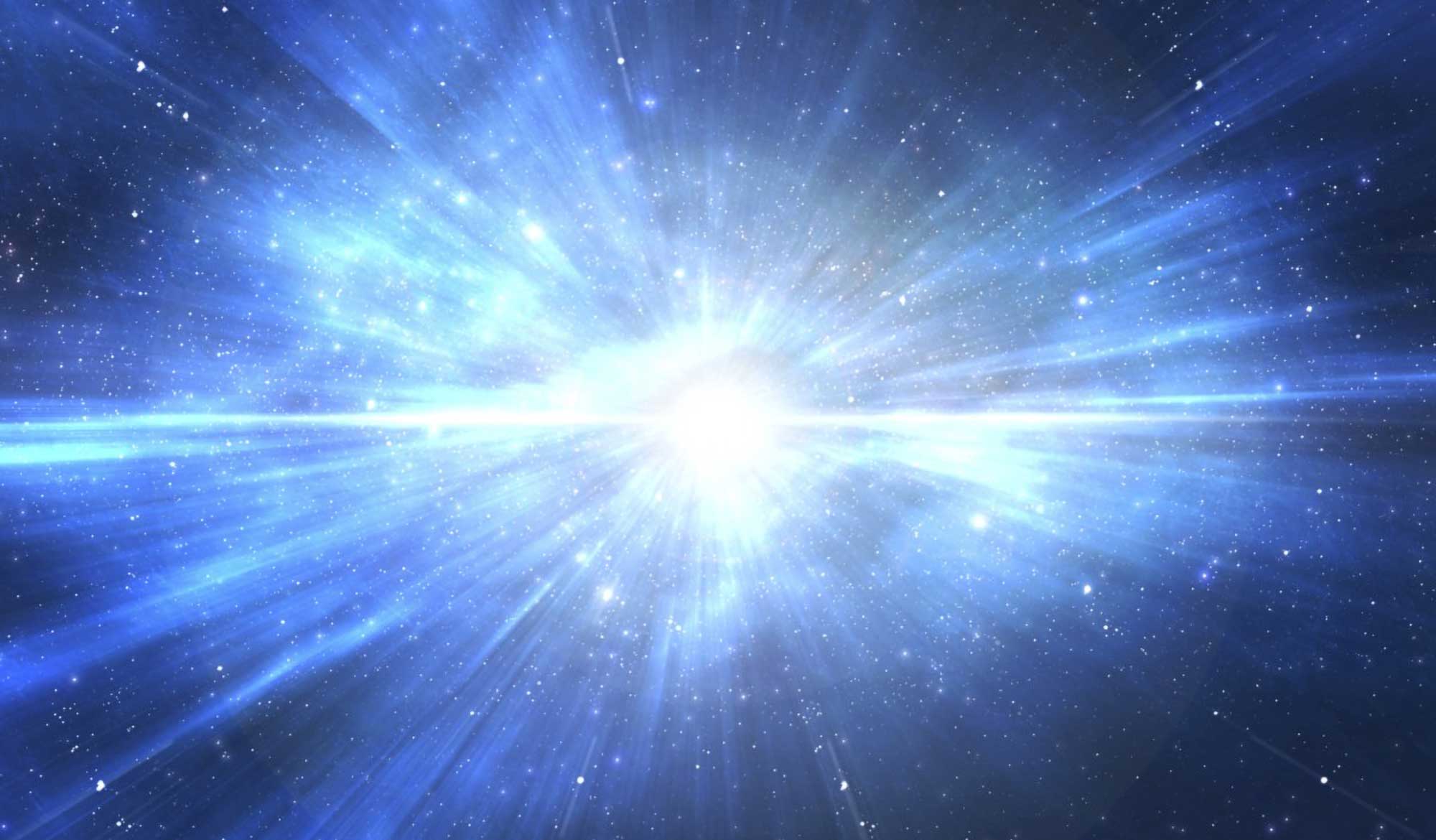by Swami B.G. Narasingha
This article “Instructing the Guru” was written in April 2018 by Śrīla Narasingha Mahārāja who answers a question concerning a previous article wherein a Vaiṣṇavī writes a letter to her dīkṣā-guru and explains to him about the importance of śikṣā. In response, a question was raised by a devotee about the etiquette of a disciple instructing her guru.
Question: In the recent article, “A Letter — From Disciple to Guru” how are we to understand that a disciple appears to be instructing her guru?
Answer: A beautiful question. Certainly this is not an everyday occurrence. However, there are references to similar instances, and even direct instructions by our previous ācāryas regarding such matters between guru and disciple.
For example, Śukadeva Gosvāmī spoke the Bhāgavatam in front of his guru, Vyāsadeva, and his parama-guru, Nārada Muni. The truth will manifest thru those with a pure heart or whomever Kṛṣṇa chooses. In the case of the article you have mentioned, Kṛṣṇa chose to deliver to the guru that which he needed to hear thru his disciple. The disciple was free from envy, sincere in her purpose, pure in heart, free from society consciousness and determined to speak the truth. Thus, there was no aparādha on her part. Śikṣā is more important than dīkṣā. In fact, we are mainly a śikṣā sampradāya. Without śikṣā, dīkṣā has little value.
Vipina-vihārī Gosvāmī was the dīkṣā-guru of Bhaktivinoda Ṭhākura, yet Bhaktivinoda had to instruct his guru about the real birth place of Caitanya Mahāprabhu. Jagannātha Dāsa Bābājī was the śikṣā-guru of Bhaktivinoda and that is the paramparā that we follow – not the line of formal dīkṣā. Substance over form – that is the ideal of the Gauḍīya samprayada.
Situations wherein a disciple has accepted a dīkṣā-guru that has not actually realised the Absolute Truth, or has insufficient knowledge of the process of bhakti-yoga, have occurred in the past and may occur again in the future. For this reason, Bhaktivinoda Ṭhākura, in his Jaiva Dharma, has given specific instructions in this regard as follows:
“Before accepting a guru, one should examine him to see that he is expert in the tattva spoken in the Vedas and has realised para-tattva. If he is, then he will certainly be capable of giving all kinds of instructions about the Absolute Truth. Normally, there is no question of giving up the dīkṣā-guru.
“There are two circumstances, however, in which he should be abandoned. First, if the disciple accepted the guru without examining the guru’s knowledge of the Absolute Truth, his Vaiṣṇava qualities, and his other qualifications, and second, if after initiation, the guru does not perform any function, he should be given up. Many passages in śāstras give evidence for this:
yo vyaktir nyāya-rahitam anyāyena śṛnoti yaḥ
tāv ubhau narakaṁ ghoraṁ vrajataḥ kālam akṣayam
“He who poses as an ācārya, but gives false instructions that are opposed to the sattvata-śāstras, will reside in a terrible hell for an unlimited period of time, and so will the misguided disciple who mistakenly listens to such a false guru.” (Hari-bhakti-vilāsa 1.62)
guror apy avaliptasya kāryākāryam ajānataḥ
utpatha-pratipannasya parityāgo vidhīyate
“It is one’s duty to give up a guru who cannot teach the disciple what he should do and what he should not do, and who takes the wrong path, either because of bad association or because he is opposed to Vaiṣṇavas.” (Mahābhārata, Udyoga-parva 179.25)
avaiṣṇavopadiṣṭena mantreṇa nirayaṁ vrajet
punaś ca vidhinā samyag grāhayed vaiṣṇavād guroḥ
“One goes to hell if he accepts mantras from an avaiṣṇava-guru, that is, one who is associating with women, and who is devoid of kṛṣṇa-bhakti. Therefore, according to the rules of śāstra, one should take mantras again from a Vaiṣṇava guru.” (Hari-bhakti-vilāsa 4.144)
“The second circumstance in which one may reject the guru is if he was a Vaiṣṇava who knew the spiritual truth and principles when the disciple accepted him, but who later became a māyāvādī or an enemy of the Vaiṣṇavas by the influence of asat-saṅga. It is one’s duty to give up such a guru. However, it is not proper to give up a guru whose knowledge is meagre, if he is not a māyāvādī or an enemy of the Vaiṣṇavas, and is not attached to sinful activity. In that case, one should still respect him as guru, and with his permission, one should go to another Vaiṣṇava who is more knowledgeable, and serve that Vaiṣṇava and take instructions from him.” (Jaiva-Dharma, Chapter 20)
This last statement by Bhaktivinoda regarding a disciple having accepted a guru with meagre knowledge in Kṛṣṇa consciousness, and a disciple having to approach another Vaiṣṇava, a śikṣā–guru of superior adhikāra (qualifications) is very pertinent to our times. This is a situation that confronted many disciples in ISKCON after the departure of Śrīla Prabhupāda, A.C. Bhaktivedanta Swami.
However, in many cases wherein a disciple has approached his or her guru to ask permission to take śikṣā from a senior Vaiṣṇava, the permission has been denied. Not only denied, but all too often the disciple(s) have been demonized – even cursed to hell by their guru! This was also the case in the late 1980s when, under the instruction of Śrīla Prabhupāda, many of his disciples took śikṣā from Śrīla Śrīdhara Mahārāja. They were subsequently driven from the movement and condemned to hell by the GBC and other leading devotees of ISKCON. The same continued thru the ‘90s and continues even up to the present day.
I am not saying this is true in all cases, and certainly not in the case of the disciple who has written the letter we are discussing. In this particular case, the guru showed much more Kṛṣṇa consciousness than the ‘party line’ leaders of ISKCON. Recognising the benefit his disciple has received from the śikṣā of Śrīla Śrīdhara Mahārāja, the aforementioned ISKCON guru gave his permission for her to take Śrīdhara Mahārāja’s śikṣā – a noble and righteous gesture on his part. Sadly, the majority of gurus and leaders in ISKCON are not so magnanimous.
What should be done when one’s guru, obviously not up to the true standard of guru-tattva, does not give permission to his disciple to take śikṣā from a senior Vaiṣṇava? Śrī Jīva Gosvāmī instructs us as follows:
ata eva dūrata evārādhyas tādṛśo guruḥ
vaiṣṇava vidveṣī cet parityājya eva
“If a guru does not permit his disciples to honour great devotees of the Lord, such a guru should be respected only from a distance, And, if he is envious of real Vaiṣṇavas, he should be rejected.” (Bhakti Sandarbha 238)
It does not end here. Śikṣā-guru is an undeniable aspect of Kṛṣṇa consciousness and, as I have already mentioned, the main thrust of our sampradāya is that of śikṣā, not dīkṣā. Recognising śikṣā-guru as a bona fide conception is allowed in the greater ISKCON, but only if that śikṣā-guru is in ISKCON! In fact, to make this understood, it is clearly stated in the online syllabus of the “ISKCON Disciple Course Material”. Additionally, a book has been written by a prominent ISKCON guru called “Śikṣā Guru in ISKCON” to further establish their institutional conception of guru-tattva. Unfortunately, that book has little to do with the real principle of śikṣā-guru and everything to do with Society Consciousness over God Consciousness. Conformity to misconception (apa-siddhānta) has become the standard for all aspiring disciples within ISKCON. Only by such conformity is one then certified as qualified for initiation. Thus, the havoc, confusion, bewilderment and lack of substantial progress in śuddha-bhakti, pure devotional service, is commonplace everywhere.
Guru is not designated with overtones of Society Consciousness. Guru means Kṛṣṇa’s representative and that is not regulated or controlled by Society Consciousness. That one’s choice of a śikṣā-guru should be within ones sampradāya is a given. One’s ‘sampradāya’ however does not mean the particular institution or registered society to which one might belong, such as this society or that society, but to the paramparā. And in this case, the Brahma Madhva Gauḍīya paramparā. However, there are numerous bona-fide societies within our sampradāya as stated by Śrīla Prabhupāda and not one of them can claim to be the only way, the truth and the light.
“There are many societies and associations of pure devotees, and if someone with just a little faith begins to associate with such societies, his advancement to pure devotional service is rapid.” (Nectar of Devotion, Ch.19)
Dīkṣā-guru and śikṣā-guru are manifestations of the caitya-guru, the Lord in the heart. This topic is extensively discussed in the opening chapter of Caitanya-caritāmṛta and one would do well to study that chapter in great detail. In doing so, one may understand the principle of guru–tattva, free from mundane considerations of Society Consciousness and the like.
guru kṛṣṇa-rūpa hana śāstrera pramāṇe
guru-rūpe kṛṣṇa kṛpā karena bhakta-gaṇe
“According to the deliberate opinion of all revealed scriptures, the spiritual master in non-different from Kṛṣṇa. Lord Kṛṣṇa in the form of the spiritual master delivers His devotees.” (Cc. Ādi.1:45)
śikṣā-guruke ta’ jāni kṛṣṇera svarūpa
antaryāmi, bhakta-śreṣṭhā, — ei dui rūpa
“One should know the instructing spiritual master to be the Personality of Kṛṣṇa. Lord Kṛṣṇa manifest Himself as the Supersoul and as the greatest devotee of the Lord.” (Cc. Ādi. 1:47)
It was the instruction of Śrīla Prabhupāda shortly before his departure in 1977 for his disciples to approach Śrīla Śrīdhara Mahārāja for spiritual guidance (śikṣā) should such a need arise. And indeed it did, because with the disappearance of His Divine Grace, his disciples were thrown into the abyss of darkness, bewilderment, confusion and inconsolable separation.
In that pitiful condition, the light of Godhead broke thru the darkness in the form of the śikṣā and affectionate association of Śrīla Śrīdhara Mahārāja — dispelling the darkness, driving away the bewilderment, dispelling the confusion and filling the hearts of those drowning in the ocean of sorrow with hope and clarity.
It is my humble opinion that if the leaders of ISKCON had not rejected the instruction of Śrīla Prabhupāda and the śikṣā of Śrīla Śrīdhara Mahārāja in 1982, they would not have deviated in the numerous ways in which they have – particularly in the matter of guru-tattva.
More Articles by Swami B.G. Narasingha
The Sacred River Sindhu/Indus
‘The Sacred River Sindhu/Indus’ was posted by Swami B.G. Narasingha on his blog, narasingha.net, on October 2nd, 2011. In this short article, Narasingha Maharaja explains the significance of the River Sindhu and his pilgrimage to it. This article was later expanded into a bigger article called ‘Sindhu River – How India Got Her Name.’
Instructing the Guru
This article “Instructing the Guru” was written in April 2018 by Śrīla Narasingha Mahārāja who answers a question concerning a previous article wherein a Vaiṣṇavī writes a letter to her dīkṣā-guru and explains to him about the importance of śikṣā. In response, a question was raised by a devotee about the etiquette of a disciple instructing her guru.
The Atomic Ray – From Uniform Consciousness to Individual Conscious Units
In “The Atomic Ray - From Uniform Consciousness to Individual Conscious Units” written in 1996 Śrīla Narasiṅgha Mahārāja discusses the constitutional position of the jīva, according to Bhaktivinoda Ṭhākura and Śrī Caitanya-caritāmṛta.













